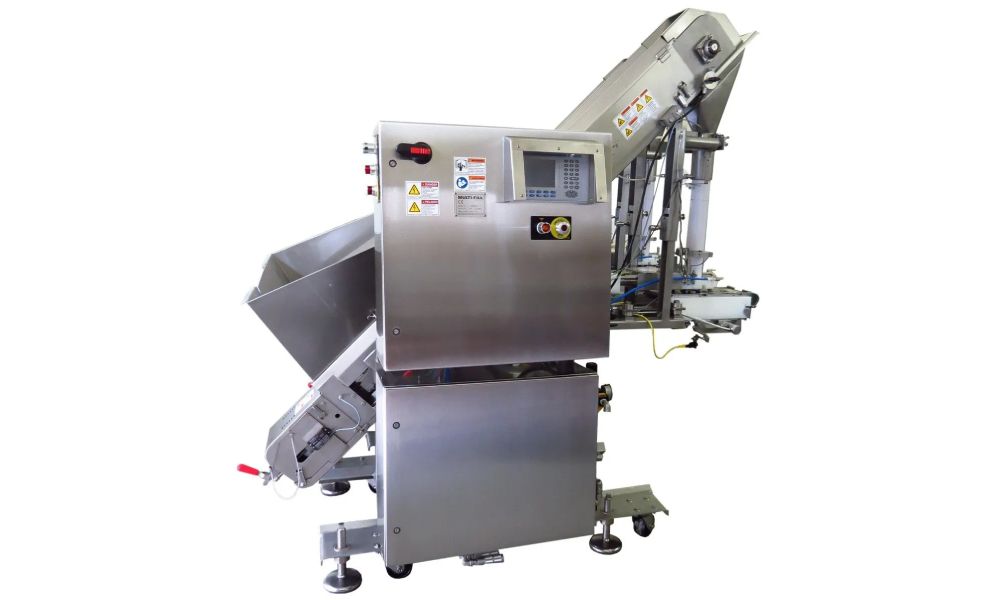10 years of experience as a food machinery equipment manufacturer
10 years of experience as a food machinery equipment manufacturer
Meat rolls, in their diverse culinary expressions, are a staple in many cuisines worldwide. These products, which can range from meat fillings encased in pastry or vegetables to intricately formed meat roulades, are appreciated for their flavor, texture, and convenience. The traditional preparation of meat rolls, especially the critical stage of filling, has long been characterized by manual labor. While this approach allows for artisanal craftsmanship, it often presents limitations in terms of production speed, consistency, and scalability, particularly for businesses aiming to meet broader market demands.

In response to the operational challenges faced by food manufacturers, the meat roll filling machine has emerged as a significant technological advancement. These automated or semi-automated systems are specifically designed to streamline the intricate process of portioning and inserting fillings into various types of meat roll products. The core purpose of such machinery is to enhance productivity, ensure product uniformity, and optimize operational workflows for food processing businesses of all sizes.
Meat roll filling machines incorporate several sophisticated components and mechanisms working in concert to achieve efficient and precise filling operations. While designs may vary based on the specific application and scale of production, certain key features are commonly found:
The adoption of meat roll filling machines offers a multitude of operational benefits that can significantly impact a food production business:
Increased Production Capacity and Speed: Automation dramatically accelerates the filling process compared to manual methods. Machines can operate continuously at high speeds, leading to a substantial increase in output and enabling businesses to meet larger orders and seasonal demands more effectively.
Enhanced Product Consistency and Uniformity: Automated portioning systems ensure that each meat roll receives a precise and consistent amount of filling. This uniformity extends to the size, weight, and overall appearance of the final product, contributing to higher quality perception and customer satisfaction.
Reduced Labor Costs: By automating a labor-intensive task, these machines reduce the reliance on manual workers for the filling process. This can lead to significant savings in labor costs, and existing staff can be reallocated to other value-adding activities such as quality control or packaging.
Improved Hygiene and Food Safety: Minimizing direct human contact with the food product is a key advantage. Automated systems reduce the risk of contamination, contributing to higher standards of hygiene and food safety. The easy-to-clean design of modern machines further supports sanitary operations.
Versatility in Production: Many meat roll filling machines are designed to be versatile, capable of handling a range of filling consistencies – from smooth purees to chunkier mixtures. With interchangeable nozzles and forming tools, some machines can be adapted to produce different types or sizes of meat rolls, offering greater production flexibility.
Optimized Material Usage and Waste Reduction: Precise portion control not only ensures consistency but also minimizes the overfilling or underfilling of products. This leads to more efficient use of raw materials and a reduction in product waste, directly impacting profitability.
Ease of Operation and Maintenance: While sophisticated in their technology, these machines are generally designed for ease of operation, with intuitive controls. Many also feature designs that facilitate quick disassembly for cleaning and maintenance, minimizing downtime.

Meat roll filling machines can be broadly categorized based on their level of automation, capacity, and specific application:
Meat roll filling machines find applications in various segments of the food industry. Commercial kitchens producing ready-to-eat meals, catering companies handling large event orders, and specialized meat processors creating value-added products like stuffed chicken breasts or gourmet sausages can all benefit. Delicatessens, butcher shops expanding their product lines, and manufacturers of frozen convenience foods also leverage this technology to enhance their production capabilities and product quality.
When considering the acquisition of a meat roll filling machine, several factors should be evaluated to ensure the chosen equipment aligns with specific production needs:
The trend towards automation in food processing is continually growing, driven by the need for efficiency, consistency, and enhanced food safety. Meat roll filling machines are part of this evolution, with ongoing developments focusing on greater precision, increased versatility, integration with smart factory systems (Industry 4.0), and improved energy efficiency. As consumer demand for diverse and convenient food options continues, the role of such automated solutions in meat roll production is set to expand further.
Meat roll filling machines represent a pivotal technology for food manufacturers seeking to optimize their production processes. By automating the traditionally labor-intensive task of filling, these machines offer substantial benefits in terms of speed, consistency, labor efficiency, and hygiene. As the food industry continues to evolve, the strategic implementation of such automated systems will be increasingly important for businesses aiming to maintain competitiveness and meet the growing demands of the market for high-quality meat roll products.
